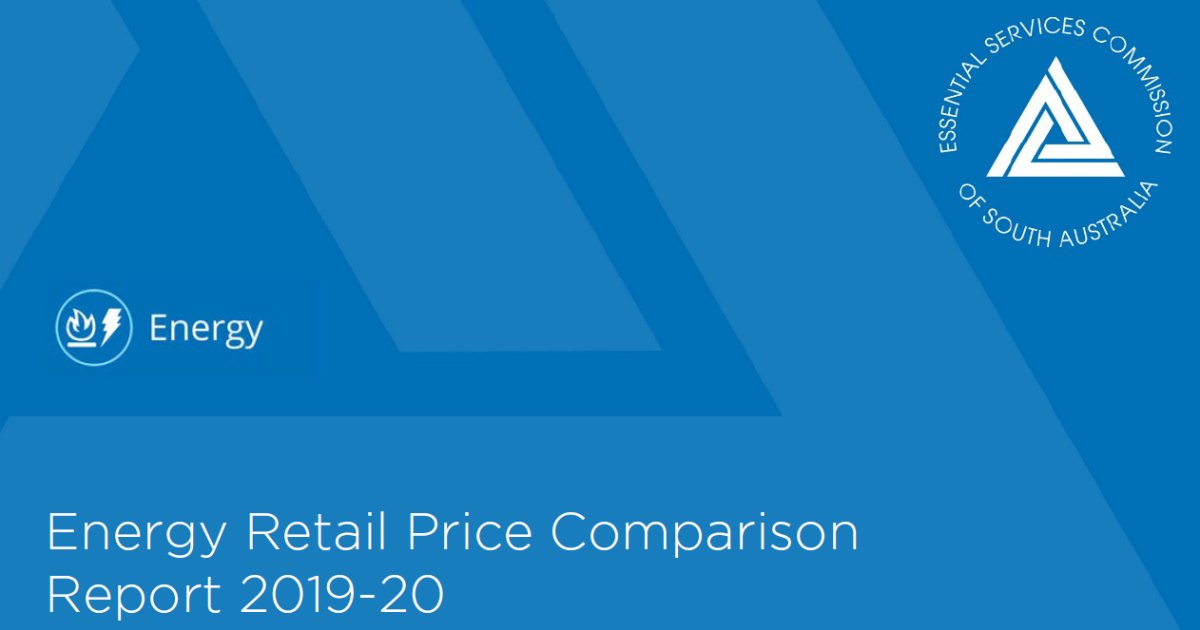
A new report from ESCOSA indicates South Australian solar owners had access to a wide range of feed-in tariff offers and generally had access to the same best-priced electricity plans as non-solar customers in 2019-20.
The Essential Services Commission of South Australia is an independent economic regulator that was established under the Essential Services Commission Act 2002. Its objective:
“protection of the long term interests of South Australian consumers with respect to the price, quality and reliability of essential services”
.. which of course includes electricity.
Feed-In Tariff Rates
Back in December 2016, ESCOSA decided it would no longer set a minimum amount for the retailer-paid component of South Australia’s solar feed-in tariff scheme from the beginning of 2017. The last minimum amount it set was 6.8c per kilowatt hour for electricity exported to the mains grid.
But even without a minimum amount set, retailers continued to offer a feed-in tariff.
ESCOSA’s latest Energy Retail Price Offers Comparison Report covers the 12 months to 30 June 2020. It shows of the dozens of retailers listed, only one was not offering a feed-in tariff at the end of the reporting period.
That single retailer aside, feed-in tariff rates as at June 30 ranged widely – from 5c to 23c per kilowatt-hour exported. ESCOSA noted solar owners should compare electricity retailers as the highest feed in tariff isn’t necessarily the best deal. Other factors such as usage and supply tariffs come into play and some of the higher rates may also be for a limited time after signup, or have other devils in the detail.
“Customers are encouraged to carefully consider the terms and conditions associated with each solar offer to find the offer best suited to their circumstances,” states the Commission.
Solar Owners And Mains Electricity Costs
ESCOSA reports that as at June 30 most electricity retailers were not discriminating between solar and non-solar customers and the majority were making their best-priced Market Offer available to owners of solar power systems, both residential and small business.
However, there remains a quite a range of average costs over a year between the retailers. Between the cheapest and the most expensive the difference was $460; a significant chunk of change. So again, it pays contact your retailer to ensure you’re on the best offer and to shop around.
Finding The Best Electricity Plans
The best electricity plan for solar owners offers a balance of high feed-in-tariffs, low usage tariffs and low daily charges. It can be a confusing and time-consuming process to sort through them all. But SolarQuotes’ electricity plan comparison tool provides an easy way to instantly see plans providing the cheapest bills over 12 months for a typical solar power system owner in any postcode across Australia.
Generally speaking, the Commission noted average residential annual electricity retail Standing Offer and Market Offer prices fell 13 percent and 4 percent respectively over the 12 months to 30 June 2020. For the average small business, the reduction was 6 percent and 4 percent respectively.
The full ESCOSA Energy Retail Price Offers Comparison Report 2019-20 report can be viewed here.

 RSS - Posts
RSS - Posts



Speak Your Mind